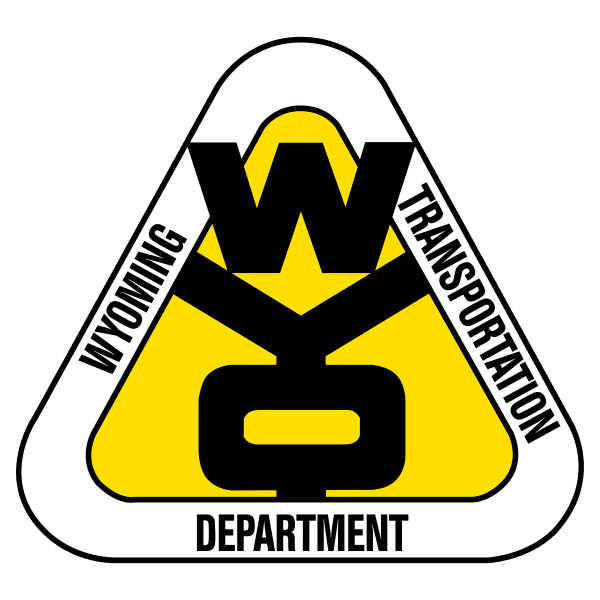Two state agencies have committed a combined $2.5 million toward installing wildlife underpasses along US 189 in southwest Wyoming to help reduce wildlife-vehicle collisions and improve safety.
The Wyoming Transportation Commission recently approved a $1.25 million match of the Wyoming Game and Fish Commission’s $1.25 million contribution, which will be used toward the Dry Piney wildlife crossing project north of La Barge.
“We are committed to ensuring the state’s roads are as safe as possible for the traveling public,” said WYDOT Chief Engineer Shelby Carlson. “The work will provide safe passage for wildlife to cross under US 189, keeping motorists safer. These underpasses allow wildlife to cross the roads without encountering traffic or fences and allows them to travel their historic migratory routes.”
The funding will be used toward the first phase of the Dry Piney project, which is expected to cost approximately $5.5 million. During the first phase, crews will install underpasses and fencing along a 5-mile stretch of US 189 between mile markers 86 and 90.
WYDOT has applied for $18.18 million in Better Utilizing Investments to Leverage Development (BUILD) funds to financially support subsequent work in the Dry Piney corridor. The work will consist of additional underpasses with fencing. WYDOT and WG&F plan to also consider the section south of La Barge for additional fencing and underpasses in the future.
Between mile markers 77 and 105, about 117 collisions are reported annually.
“By partnering together, we can ensure vital projects like Dry Piney get started to help mitigate wildlife-vehicle collisions,” said WYDOT Director K. Luke Reiner. “We average about 17 crashes per year along this stretch of road, which means this project is definitely needed. Wildlife mitigation is something we will continually be working on to ensure our roads are as safe as possible for the traveling public.”
The additional funding from the Wyoming Transportation Commission will help ensure the project gets started.
“The Dry Piney project cost is estimated at more than $5 million, so an additional $1.25 million from the Transportation Commission is absolutely a big boost for the project as well as the safety of the traveling public and wildlife,” said David Rael, Wyoming Game and Fish Commission president. “It’s a win-win.”
The Dry Piney project will help the Wyoming Range mule deer herd as well as pronghorn and moose movement. The total cost of all three project phases is expected to be between $12 and $36.5 million.
“This area of Wyoming has one of the highest rates of mule deer vehicle collisions,” said Mike Larson, Wyoming Transportation Commission chairman. “This project would not only help improve habitat connectivity and help conserve mule deer migrations, but also make it safer for motorists.”
WYDOT, the Wyoming Game and Fish Department and the Federal Highway Administration will also host a public open house from 5 to 7 p.m. on Tuesday, Nov. 12 at the La Barge Town Hall, 28 S. Labarge St. in La Barge. The purpose of this meeting is to share information about the development of the US 189 wildlife connectivity project and receive public feedback.
Patrick Crank, Wyoming Game and Fish commissioner, said the issue in the Dry Piney area and other parts of the state is vital to address, not only to ensure the quality of life for the state’s citizens, but also to protect the state’s natural resources.
“Wildlife-vehicle collisions endanger our citizens, cost millions of dollars in property damage and waste our important wildlife resources,” Crank said. “We hope the Commission and WYDOT can work to raise additional funds and get these underpasses completed as soon as possible.”
The state already has been working to generate additional funds for wildlife conservation. During the 2018 state Legislative session, lawmakers approved a new wildlife conservation license plate. The initial application fee is $180, of which $150 goes to a wildlife conservation fund and $30 toward the specialty plate.
The fund supports wildlife conservation projects related to the transportation system such as signage, crossing structures, fences and other work.
After lawmakers approved the new license plate, the Wyoming Transportation Commission approved the new design in consultation with various state stakeholders. So far, WYDOT has issued about 1,082 as of the end of August.
Although wildlife crossings are beneficial, motorists should also exercise caution when traveling in the state. Drivers are encouraged to slow down during certain times of the day such as dusk and dawn when wildlife are prone to being near the roads.
Other tips for staying safe when traveling include:
- Putting down distractions and paying attention to the road.
- Using high beams to see more of the road.
- Scanning across the road and rights of way frequently.
- Watching for eyeshine in the headlights.
- Asking passengers to help watch for wildlife.
- Avoiding herding wildlife off the road with your car. If there is a crowd, creep up slowly until they disperse. You can honk to encourage them.


